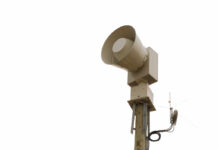
President Trump and Transportation Secretary Sean Duffy unveiled an ambitious three-year plan to overhaul America’s outdated air traffic control system by 2028, replacing 1970s-era technology with modern infrastructure to enhance safety and reduce flight delays.
At a Glance
- The Trump administration has proposed a comprehensive plan to modernize the U.S. air traffic control system by 2028
- The initiative will replace outdated radar systems, software, hardware, and telecommunications at over 4,600 sites nationwide
- Six new air traffic control centers and 15 tower replacements are included in the multi-billion dollar proposal
- The administration has requested $4 billion for fiscal year 2026 with total costs estimated in the “tens of billions”
- The plan addresses critical infrastructure needs neglected under the previous administration
Comprehensive Modernization Effort
President Donald Trump, alongside Transportation Secretary Sean Duffy, has introduced a sweeping initiative to transform America’s aging air traffic control system. The proposal focuses on four critical components: communications, surveillance, automation, and facilities. By 2028, the plan aims to replace current systems with new fiber, wireless, and satellite technologies at more than 4,600 sites nationwide. The initiative also includes replacing 618 radars by 2027 and implementing enhanced runway safety measures at 200 airports across the country.
The administration’s proposal comes in response to numerous recent issues with the Federal Aviation Administration’s outdated infrastructure, including a ground delay at Newark Liberty International Airport due to staffing shortages and an outage affecting radar and communications systems. The current National Airspace System, while safe, relies on technology from the 1970s and 1980s that has become increasingly difficult to maintain and inadequate for handling modern aviation challenges, including the integration of drones and advanced air mobility vehicles.
✅ Biden Administration (2021–2025): Substantial Modernization Initiatives
1. Infrastructure Investment:
•The Bipartisan Infrastructure Law allocated $25 billion over five years for airport and ATC infrastructure improvements.2. Radar and Facility Modernization:
•In 2024,… https://t.co/yI2cc5nXnl— Pete (@splendid_pete) May 6, 2025
Funding and Implementation
The ambitious overhaul won’t come cheap. The administration has requested an initial $4 billion for fiscal year 2026, with the total cost estimated to be in the “tens of billions” of dollars. A Republican proposal has suggested $12.5 billion for the project, while Airlines for America, a trade group representing major U.S. carriers, has advocated for an additional $18.5 billion in emergency funds to expedite the process. Secretary Duffy emphasized the need for upfront funding from Congress to complete the project within the proposed three to four-year timeframe.
“This is bold, this is gonna be challenging, but we absolutely can do it,” said Sean Duffy.
The plan calls for consolidating the project under “one, big beautiful contract,” as President Trump described it, rather than the piecemeal approach that has characterized previous modernization attempts. This approach aims to create a common platform across all air traffic facilities, streamlining operations and enhancing efficiency. The administration has requested emergency supplemental funding to address immediate infrastructure needs, emphasizing the critical nature of the upgrades.
Addressing Past Neglect
President Trump didn’t mince words when addressing why this overhaul is necessary now, pointing to what he characterized as neglect under the previous administration. “Pete Buttigieg, who was the secretary of transportation, had no clue what the problem was,” Trump stated, referencing his predecessor’s handling of the FAA’s infrastructure needs. A Government Accountability Office report cited by the administration criticized previous leadership for not prioritizing FAA modernization despite known issues.
“Under President Trump, America is building again,” said Transportation Secretary Sean Duffy.
The proposal has garnered support from both labor organizations and industry groups, highlighting the broad recognition of the critical need for these upgrades. Officials have likened the modernization to upgrading from a flip phone to a smartphone, emphasizing the technological leap forward the new system represents. Additional technologies will be deployed in the Caribbean and Alaska to provide real-time surveillance and weather information, addressing specific regional challenges that have long plagued air traffic management in these areas.

























